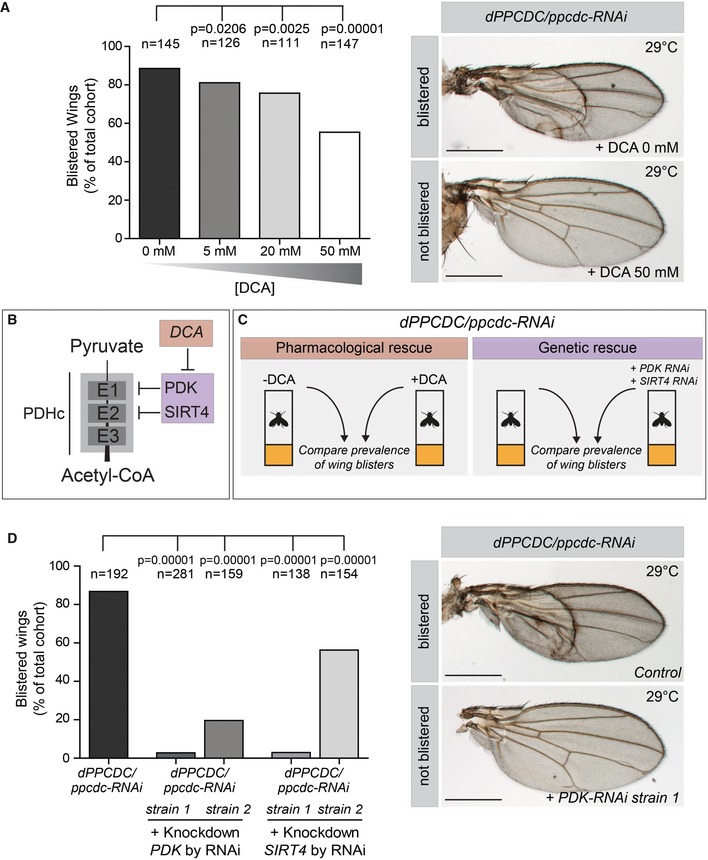Figure 6. Chemical and genetic inhibition of a PDH inactivator rescues the wing phenotypes induced by impaired CoA biosynthesis.

-
AExperiments were performed as depicted in (C, left part) and the % of blistered wings was determined in adult dPPCDC/ppcdc‐RNAi flies raised on control food or on food containing increasing concentrations of DCA. A dose‐dependent rescue was observed. Representative images of a blistered and a normal, non‐blistered wing are shown. Total number of flies scored for each group over several experiments is indicated above each bar. Statistical analysis was carried out using Fisher's exact test.
-
BSchematic visualization of the pyruvate dehydrogenase complex (PDHc) and its negative regulators. The PDH complex consists of 3 subunits: PDH‐E1, PDH‐E2, and PDH‐E3. The PDH complex is required for the conversion of pyruvate to an acetyl group, subsequently forming acetyl‐CoA. Lipoylation of PDH‐E2 is required for normal activation of PDH. Pyruvate dehydrogenase kinase (PDK) phosphorylates PDH‐E1 and thereby inactivates PDH. Sirtuin 4 (SIRT4) is a hydrolase abrogating lipoylation of PDH‐E2 and thereby also inhibiting PDH activity. Dichloroacetic acid (DCA) inhibits PDK. Inhibiting PDK or SIRT4 expression by RNAi, or inhibiting PDK by DCA is expected to increase activation of PDH.
-
CSchematic representation of experiments performed to investigate possible pharmacologic and genetic rescue of the adult wing‐blister phenotype induced by dPPCDC/ppcdc‐RNAi. Left part: dPPCDC/ppcdc‐RNAi flies were raised on control food or on food containing DCA and the number of blistered wings was scored. Right part: Adult wing‐blister phenotype of dPPCDC/ppcdc‐RNAi flies were examined with dPPCDC/ppcdc‐RNAi flies in which PDK‐RNAi or SIRT4‐RNAi were co‐expressed, and then the number of blistered wings were scored.
-
DExperiments were performed as depicted in (C, right part) and the % of adult blistered wings was determined for dPPCDC/ppcdc‐RNAi flies alone or in a combined background with PDK‐RNAi or SIRT4‐RNAi. Two independent RNAi lines were used to downregulate PDK and to downregulate SIRT4. Co‐expression of RNAi constructs that targeted PDK or SIRT4 resulted in rescue of the blister phenotype. Total number of flies scored for each group over several experiments is indicated above each bar. Statistical analysis was carried out using Fisher's exact test.
